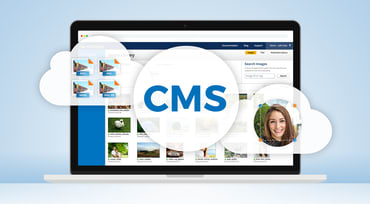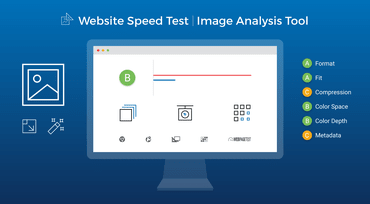Bots - which have been around for a long time and perform different functions - are gradually replacing traditional applications. Consider Internet bots, also known as web robots, as software applications that run automated tasks over the internet, such as crawling websites and indexing search engines. Slack, the popular business messaging service, also popularized the use of bots for almost anything, from tracking stand-ups and sending reminders, to activating continuous integration and different types of activities.

Great content is hard to come by. You can invest a lot of time and effort in building a great media library, but if content managers and editors can't quickly find what they need at the right time, it's almost useless (and frustrating). Good search capabilities allow you to provide them with a better experience: present relevant content or a well-organized catalog by a variety of criteria such as tags, folders, size, resolution, aspect ratio, faces, colors and many more.

Video is an increasingly important component for websites - whether it’s to inform visitors, enhance user experience or support sales and marketing efforts. But delivering high-quality video at large scale can be quite a challenge. You need to consider encoding, format, bandwidth usage, delivery and the devices on which visitors may be watching the video, to name just a few concerns.

WordPress is the number one content management system (CMS) in use today, running approximately 27 percent of the entire internet. Several high-traffic websites run on WordPress, and many utilize media, such as images and videos, to attract users and meet their needs.

Update Cloudinary now has a new Vue SDK.
If you intend to build a photo gallery online, you have to seriously consider how to protect the images from users who are not buying them. While visitors need to see the picture before purchasing, there needs to be a way to ensure that even serious buyers are not tempted to use the images without agreeing to your license terms.

As a developer, you hope and anticipate that your website or mobile application will be accessed by different users on various devices. To improve the user-experience, irrespective of the viewing device, you need to make sure that each image adapts to different graphic layouts, device resolutions and other viewing requirements. For example, for an eCommerce site, one image will be displayed on different pages — home page, product page, shopping cart and more — and will be viewed on a desktop, cellphone or a tablet. This means that you need to create numerous versions of every image and for a website with hundreds of images, manual transformation is not scalable.

Because images dominate page weight, methodical image optimization can have a significant effect on conversions and user experience. And the performance tools you choose to use can have a powerful impact on how websites are built and maintained. One such popular open source tool is WebPagetest. It is designed to measure and analyze webpage performance, which is why Cloudinary chose to partner with our friends over there to launch Website Speed Test.
You might have read some tutorials or articles explaining the importance of images and how to optimize them to deliver a great experience to your users. But does this work really translate into wins for your company? In this talk, you see real-world examples of the positive impact that image optimizations can have on metrics that your bosses and clients care about. You will walk away from this talk with compelling data and useful tools to help you get buy-in and support for this important user experience work at your company.

Everyone is a content producer today - from the largest publishing house and entertainment studio, down to the smallest eCommerce store, corporate website or personal blog.
If content is the lifeblood of your website or application, images and videos form the heart that makes it tick and creates an emotional connection with the audience. But, using images and videos to make the content visually engaging and meet your conversion goals, you face a new challenge: managing your digital assets. Because the images and videos are created by different teams for different channels - such as website, social media, eCommerce store, blogs, partners and digital agencies to name a few - chaos can ensue.

Lossy image compression is a great way to reduce the file size of an image, which helps to improve the performance of your website or app and cut bandwidth costs. And, if it goes well, nobody can tell the difference. If it goes well…
